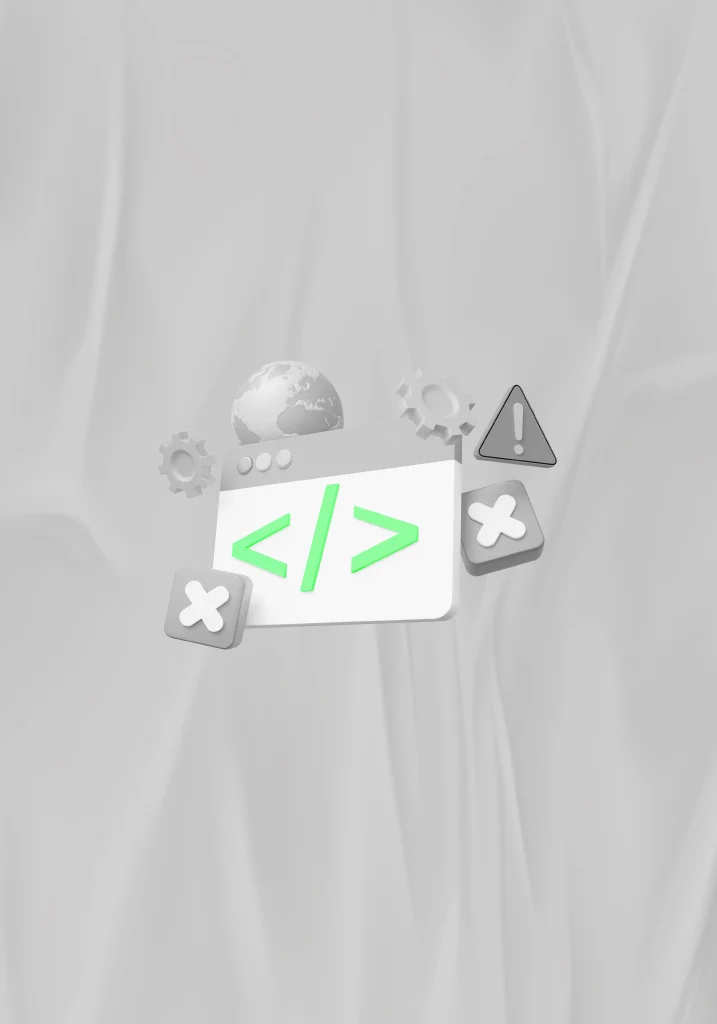Web development is quite important these days, meaning businesses need a strong online presence to keep customers happy. Brands are putting substantial efforts into building websites worth showing off.
Building such great websites requires thorough planning. To make the whole process simple and easily executable, brands can rely on a detailed process that comes under the web development life cycle. The web development cycle is like a roadmap that helps create a website loved by consumers as well as search engines.
But before coming to the web development cycle, let’s start by understanding web development.
Understanding Web Development
Web Development is the process of creating and maintaining websites. It comprises numerous tasks ranging from designing to coding and even database management.
There are three core areas of web development: Back-End Development, Front-End Development and Full-Stack Development.
1. Back-End Development
Back-end development is the powerhouse without which a website will be left non-functional. It involves databases, servers, and many logical components that aren’t visible at the face of a website. Java, Python, PHP, Ruby, ASP.NET, Oracle, and MySQL are some of the key back-end technologies used in web development.
2. Front-End Development
Front-end development is about making a website look good and easy to use. It helps bring in visitors and turn them into customers. Front-end developers use special computer languages (CSS, JavaScript, and HTML) to create websites that work well on different devices and are smooth to use.
3. Full-Stack Development
Full-stack development means handling all parts of building a website or app, both what you see (front-end) and what makes it work behind the scenes (back-end). It’s about managing everything needed from start to finish.
Understanding Web Development Life Cycle
A Web Development life cycle is all the steps you take to build a website or during web app development, from having an idea to launching it and keeping it running. It is a widely known, organised way to make sure your website works great with as few hiccups as possible.
It’s like a basic plan for web development and web app development, which helps you avoid mistakes and get the best outcome.
Stages of Web Development Lifecycle
1. Research and Analysis
Start by understanding who will use your website (age, interests, needs). Also, check out what other similar websites do. Figure out what your website should do and make a list of all the things it needs.
2. Planning
Website planning involves determining its design, necessary tools, and content. This process builds upon understanding your target audience and existing online resources to make decisions about the site’s structure and functionalities. Key steps include content organisation, developing a basic layout (wireframe), and choosing the appropriate technology and development method.
3. Design
Designing your website is key to how it looks and feels (UI/UX). Make it easy to use on any device. Decide the layout, visual style, and add images and videos to make it appealing. This needs good knowledge of CSS, JavaScript, and HTML.
4. Content Creation
Creating website content is crucial for connecting with your audience. Good content is easy to understand and informative. This includes writing engaging titles and keeping information current. Ultimately, compelling content that addresses user needs is essential for attracting and retaining customers.
Therefore, give this aspect significant attention.
5. Development
During the development stage, the site is constructed and functionality is implemented. This involves applying visual elements to create a functional website. The process starts with the homepage and progresses to other pages, with an emphasis on site navigation.
This stage includes the setup of a content management system (CMS platforms like WordPress), contact forms, and e-commerce capabilities.
6. Testing and deployment
After the website is built, it’s fully tested to find and fix any problems (bugs). This testing checks different parts, how they work together, if it can handle many users, how easy it is to use, and if it works on different devices. We also make sure everything runs smoothly and is ready for search engines before launching. After testing is successful, the website goes live. Once it works well, the website goes live.
7. Maintenance
After your website launches, monitor its performance. Make updates to add new things and make it better. Regular updates also help keep it safe and working well for everyone.
Website maintenance can involve:
- Updating software
- Backing up data
- Checking website traffic
- Looking for security issues
Conclusion
Web Development and web app development require important steps for success. Every web development project benefits from a basic plan and thorough preparation, even if some steps can be changed or skipped. By following these stages, you will be able to create a website that attracts visitors and ranks high.
Frequently Asked Questions
What is the web development lifecycle?
The web development lifecycle is a structured process that outlines the steps involved in creating a website, from initial planning to final launch and maintenance.
Why is the web development lifecycle important?
The web development lifecycle is important because it ensures a systematic approach, helping teams manage time, resources, and quality effectively while meeting business goals.
What are the main stages of web development?
The main stages typically include Research & Analysis, Planning, Design, Content Creation, Development, Testing & Deployment, and maintenance.
Who is involved in the web development process?
The process usually involves project managers, designers, developers, content creators, and QA testers, depending on the project’s scale.



